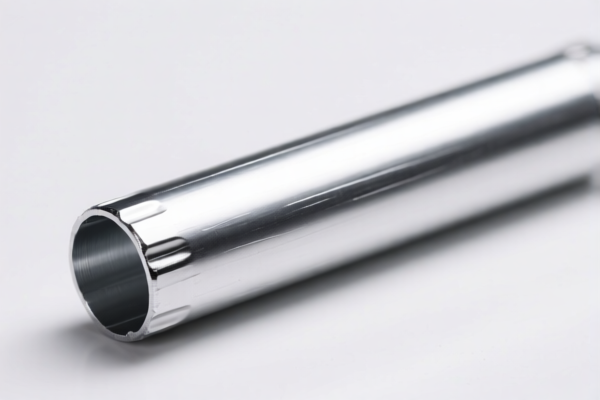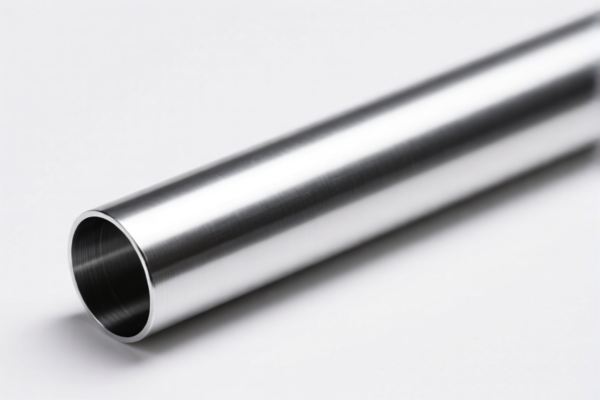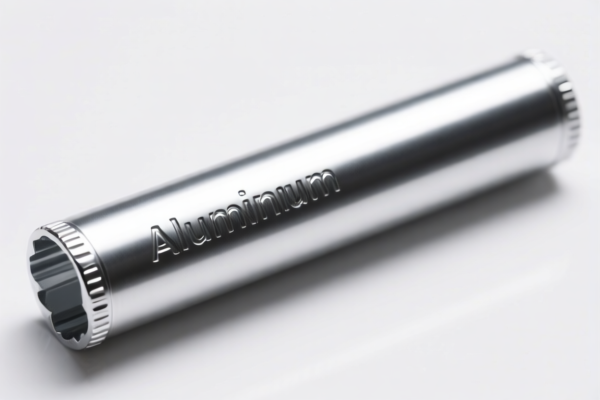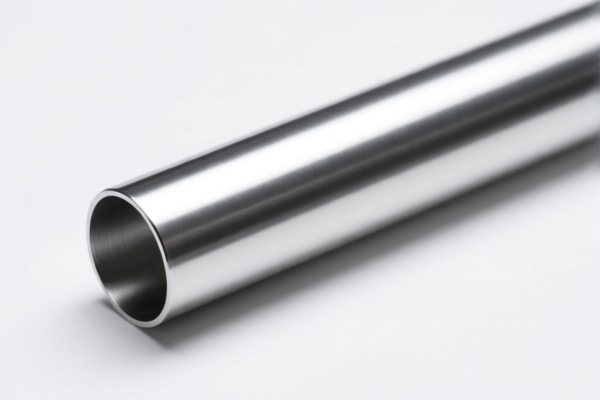| HS Code | Official Doc | Tariff Rate | Origin | Destination | Effective Date |
|---|---|---|---|---|---|
| 7608100030 | Doc | 35.7% | CN | US | 2025-05-12 |
| 7608100090 | Doc | 35.7% | CN | US | 2025-05-12 |
| 7609000000 | Doc | 35.7% | CN | US | 2025-05-12 |
| 7609000000 | Doc | 35.7% | CN | US | 2025-05-12 |
| 8307903000 | Doc | 58.8% | CN | US | 2025-05-12 |
| 8307906000 | Doc | 58.8% | CN | US | 2025-05-12 |
| 8311900000 | Doc | 55.0% | CN | US | 2025-05-12 |




Aluminum Tube
An aluminum tube is a hollow extrusion of aluminum, characterized by a circular cross-section, though other shapes exist. It is a versatile material widely used across numerous industries due to its lightweight nature, corrosion resistance, high strength-to-weight ratio, and machinability.
Material Properties:
- Aluminum Alloy: Typically produced from various aluminum alloys, with 6061, 6063, 5052, and 3003 being common choices. The specific alloy dictates properties like strength, weldability, and corrosion resistance.
- Strength: Offers good tensile and yield strength, particularly when alloyed and heat-treated.
- Weight: Significantly lighter than steel, making it suitable for applications where weight reduction is critical.
- Corrosion Resistance: Forms a protective oxide layer upon exposure to air, providing excellent resistance to corrosion in many environments.
- Machinability: Easily machined, formed, and welded.
- Conductivity: Excellent electrical and thermal conductivity.
- Recyclability: Highly recyclable without significant loss of properties.
Purpose and Function:
Aluminum tubes serve a broad range of functions, primarily relating to structural support, fluid conveyance, and heat transfer. Key applications include:
- Structural Components: Used in frameworks, supports, and bracing where a lightweight yet strong material is needed.
- Fluid Transport: Employed in pipelines for liquids and gases, particularly in applications requiring corrosion resistance.
- Heat Exchangers: Utilized in radiators, condensers, and evaporators due to their thermal conductivity.
- Packaging: Used in collapsible tubes for pastes, creams, and aerosols.
- Medical Applications: Employed in medical devices and equipment due to its biocompatibility and sterilizability.
Usage Scenarios:
- Aerospace: Aircraft structures, hydraulic lines.
- Automotive: Radiators, fuel lines, chassis components.
- Construction: Handrails, supports, scaffolding.
- Furniture: Chair and table frames.
- HVAC: Refrigeration lines, ductwork.
- Packaging: Toothpaste tubes, cosmetic containers.
- Bicycles: Frames, handlebars, seat posts.
- Irrigation: Sprinkler systems, tubing.
Common Types:
- Seamless Tubes: Manufactured without a weld seam, offering higher pressure-bearing capacity and superior corrosion resistance. Produced through processes like extrusion or drawing.
- Welded Tubes: Fabricated by welding aluminum strips or sheets together. More cost-effective than seamless tubes for many applications.
- Extruded Tubes: Produced by forcing aluminum through a die, resulting in a consistent cross-section. Common for complex shapes.
- Drawn Tubes: Produced by pulling aluminum through a die to reduce diameter and increase strength.
- Temper Designations: Aluminum tubes are often categorized by their temper (e.g., T6, T4), which indicates the heat treatment process and resulting mechanical properties. T6 denotes solution heat-treated and artificially aged, offering high strength. T4 indicates solution heat-treated and naturally aged.
- Anodized Tubes: Surface treatment to enhance corrosion resistance, wear resistance, and aesthetics.
Aluminum tube can refer to seamless aluminum tubes and pipes, or other types of aluminum tubes and pipes. Here's a breakdown of relevant HS codes based on the provided information:
-
7608100030: This HS code covers Aluminum tubes and pipes: Of aluminum, not alloyed Seamless.
- 76: Chapter 76 refers to Aluminum and articles thereof.
- 08: Heading 08 specifies Aluminum and articles thereof, including tubes and pipes.
- 100030: Subheading 100030 further defines the product as seamless tubes and pipes made of non-alloyed aluminum.
- Tax Rate: Base tariff is 5.7%, with a 0.0% additional tariff. After April 2, 2025, an additional tariff of 30% will be applied, resulting in a total tariff of 35.7%.
-
7608100090: This HS code covers Aluminum tubes and pipes: Of aluminum, not alloyed Other.
- 76: Chapter 76 refers to Aluminum and articles thereof.
- 08: Heading 08 specifies Aluminum and articles thereof, including tubes and pipes.
- 100090: Subheading 100090 further defines the product as other types of tubes and pipes made of non-alloyed aluminum (i.e., not seamless).
- Tax Rate: Base tariff is 5.7%, with a 0.0% additional tariff. After April 2, 2025, an additional tariff of 30% will be applied, resulting in a total tariff of 35.7%.
-
7609000000: This HS code covers Aluminum tube or pipe fittings (for example, couplings, elbows, sleeves).
- 76: Chapter 76 refers to Aluminum and articles thereof.
- 09: Heading 09 specifies Aluminum tube or pipe fittings.
- 000000: Subheading 000000 specifies fittings such as couplings, elbows, and sleeves.
- Tax Rate: Base tariff is 5.7%, with a 0.0% additional tariff. After April 2, 2025, an additional tariff of 30% will be applied, resulting in a total tariff of 35.7%.
It is important to note that the applicable tariff rate for these HS codes will be 35.7% until April 2, 2025, after which it will increase to 65.7% due to the additional 30% tariff.
Customer Reviews
No reviews yet.